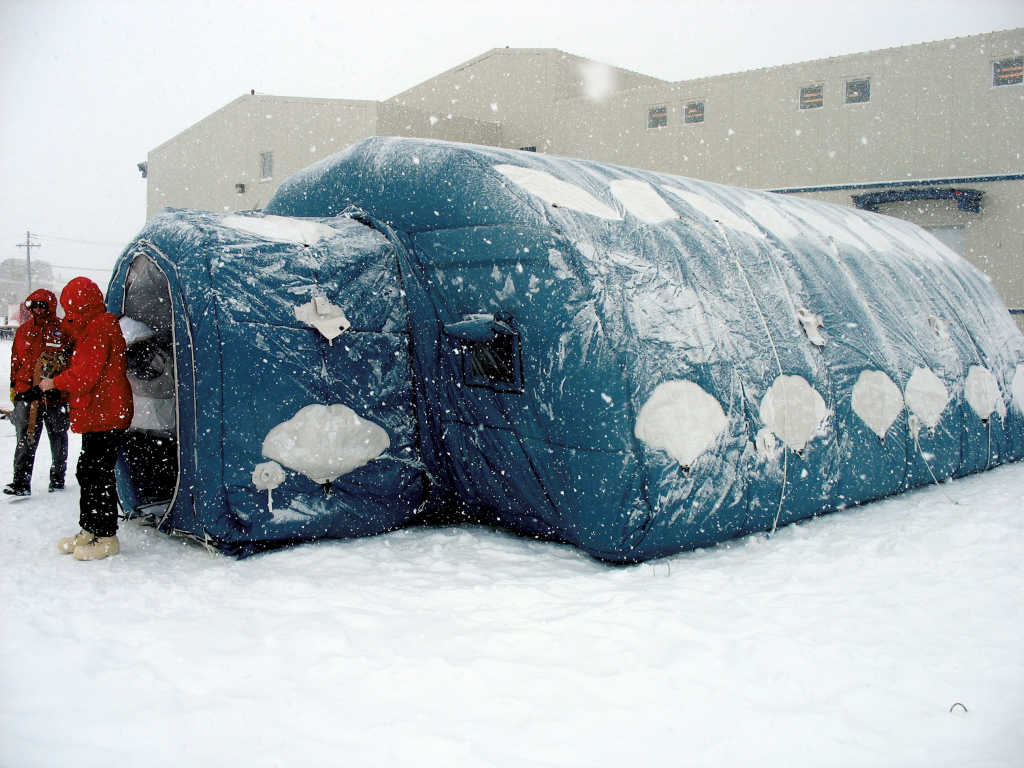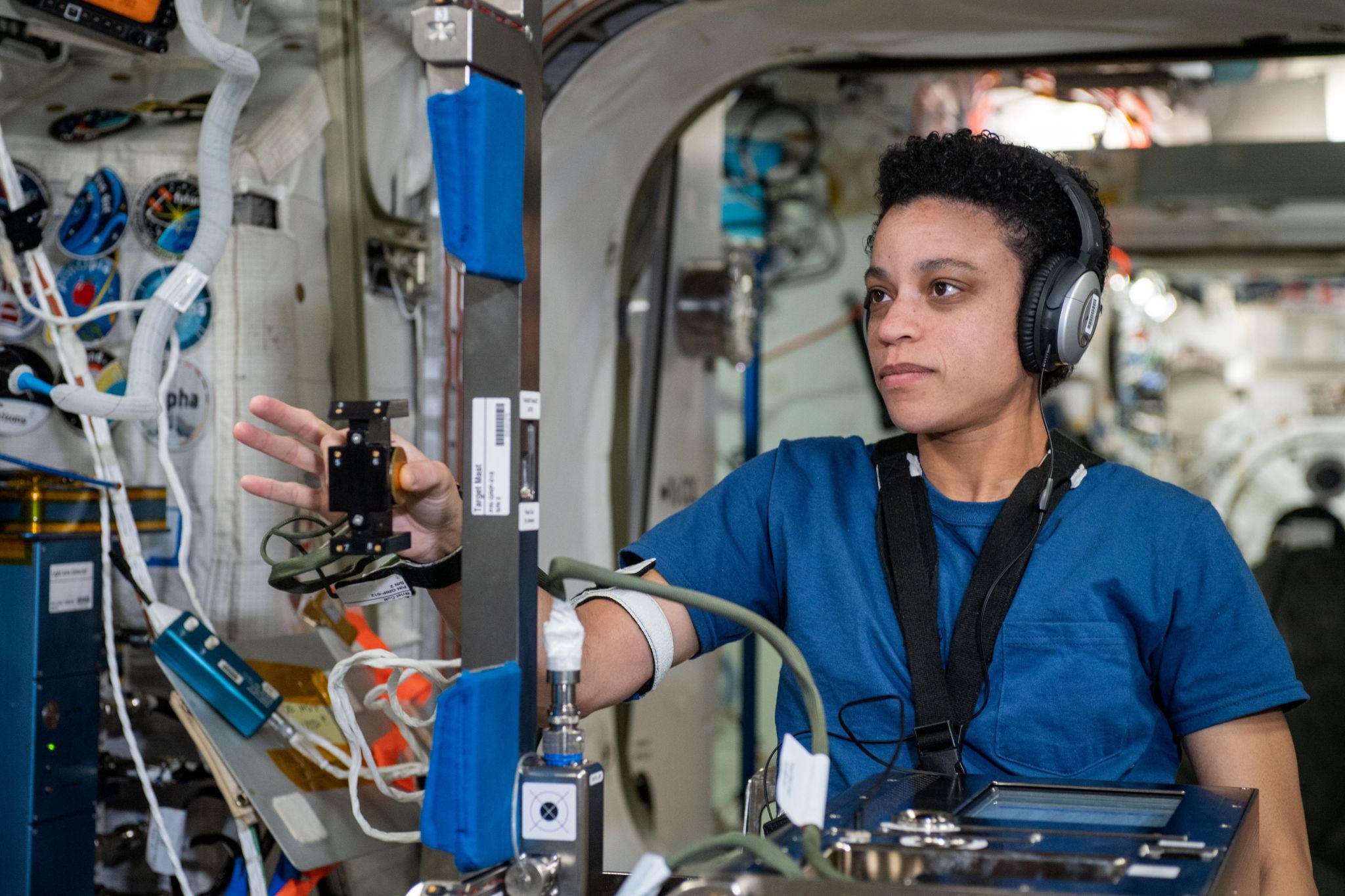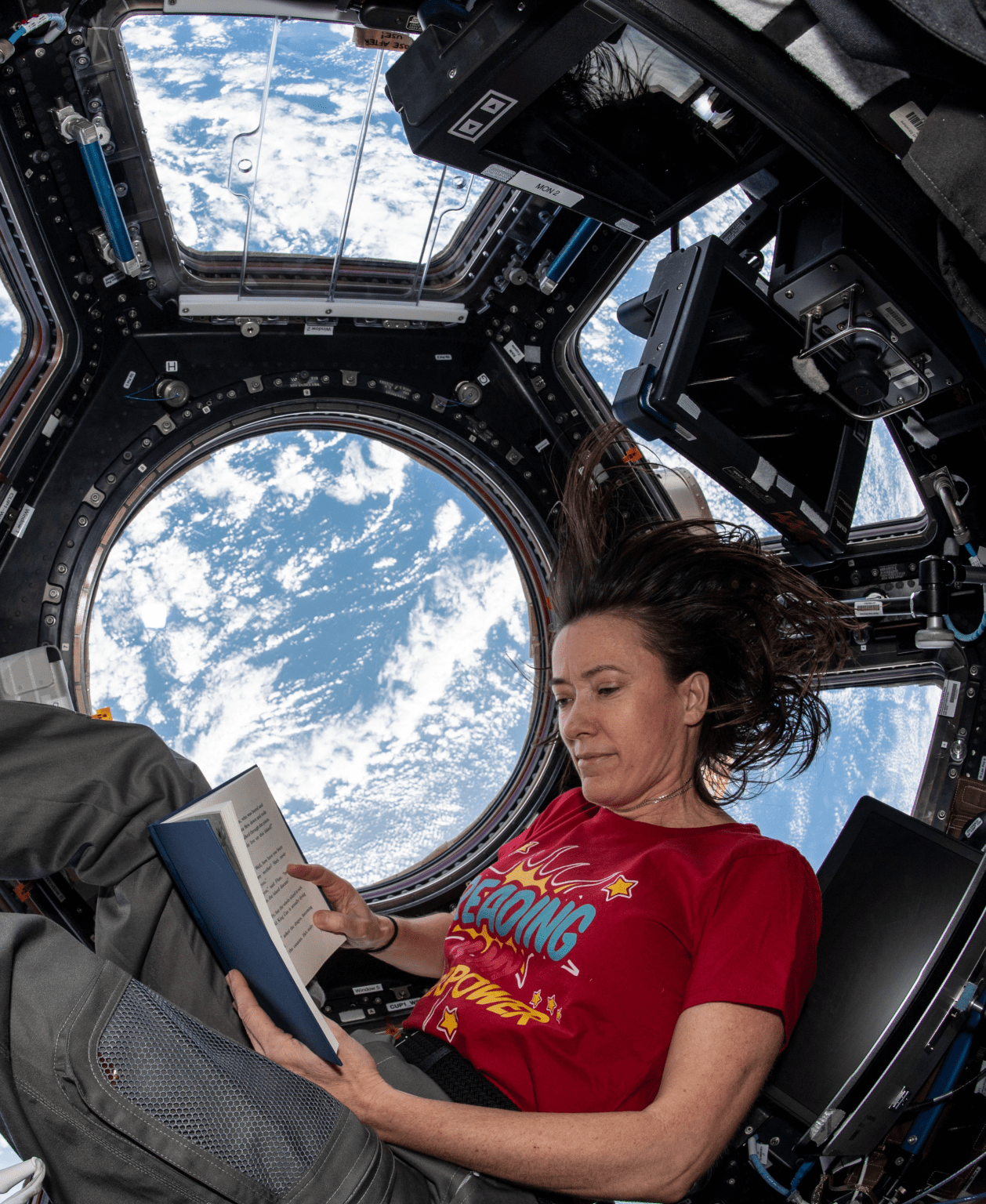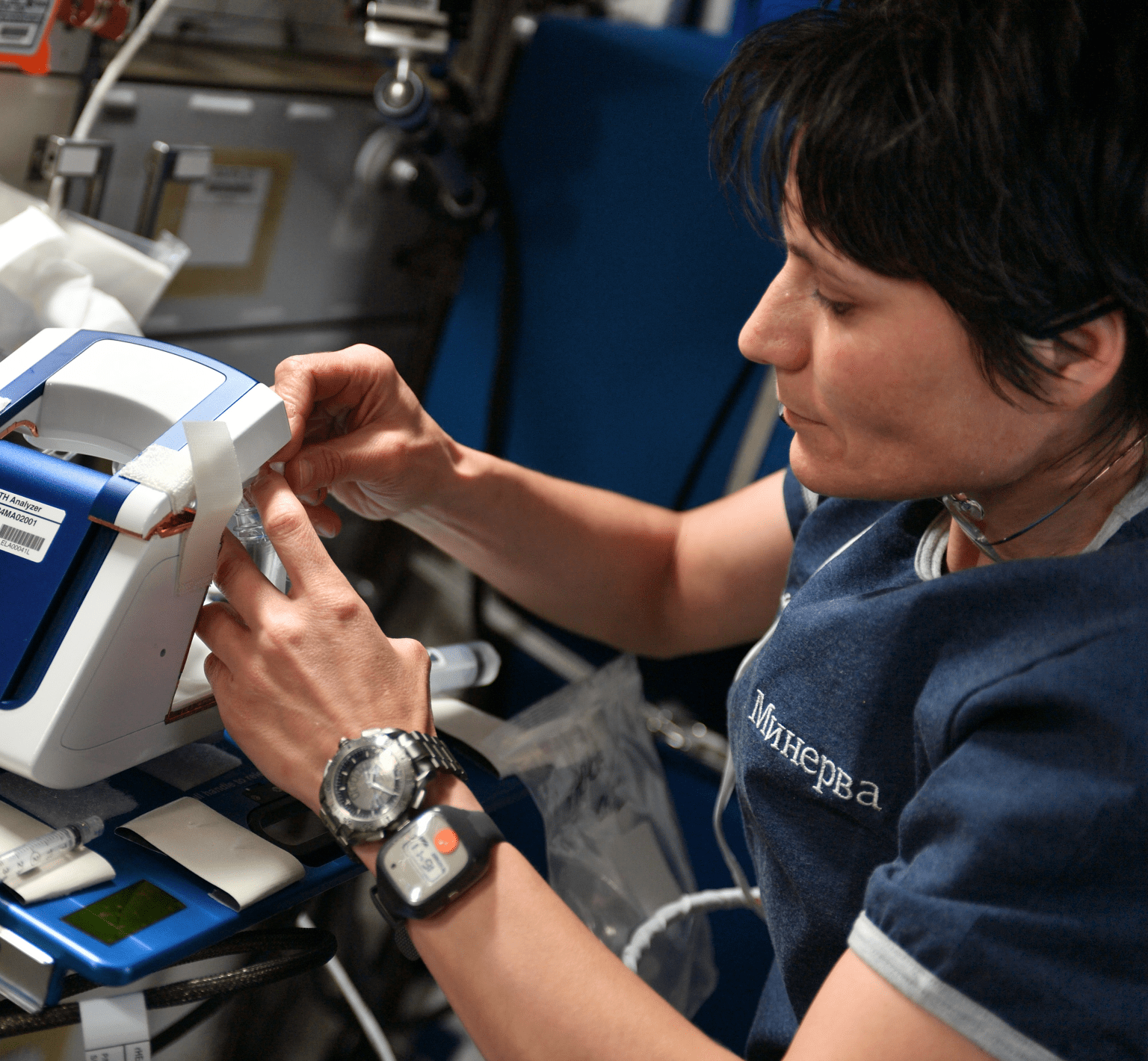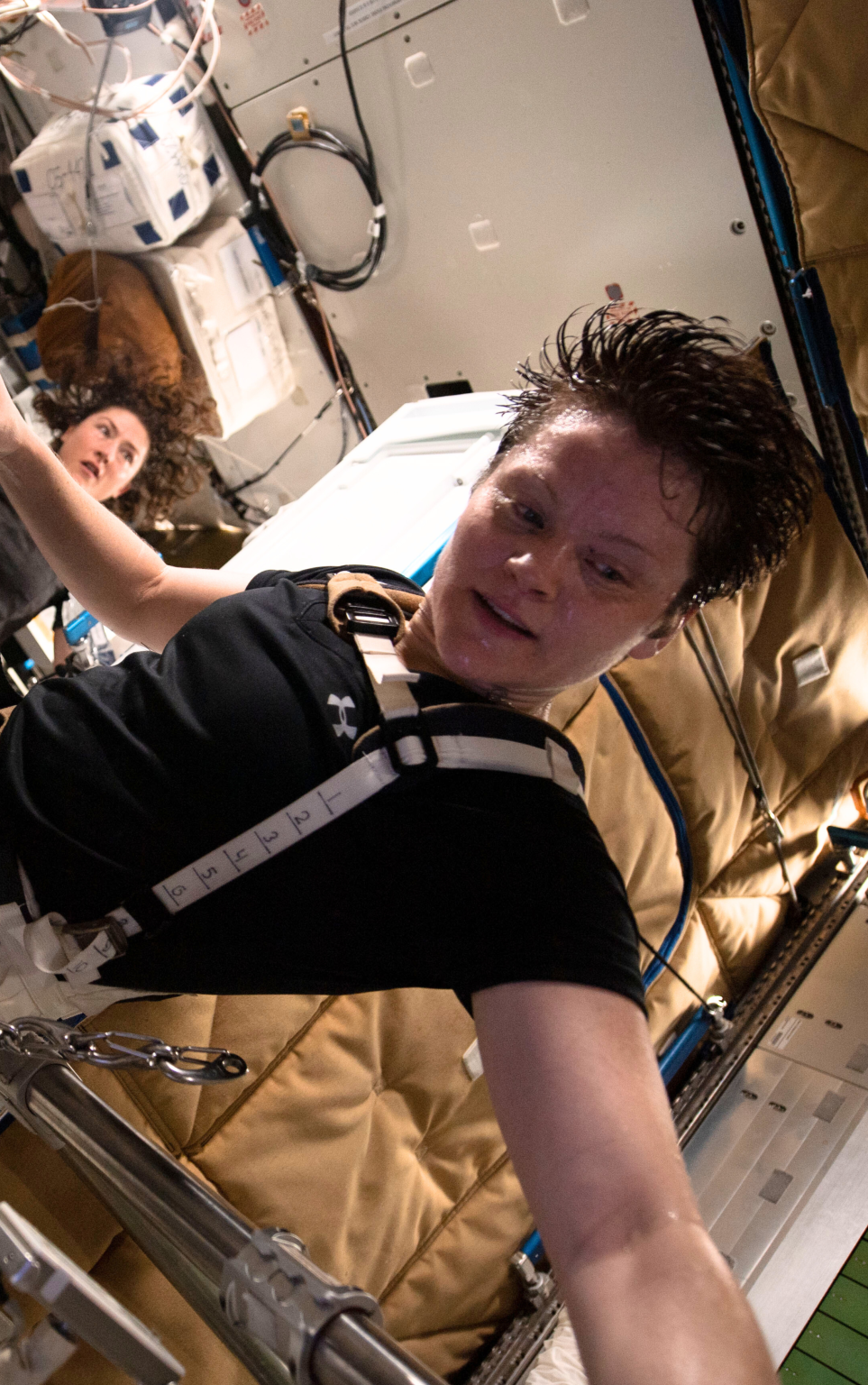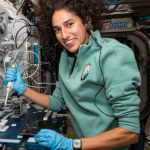Research in space and on Earth furthers our knowledge of astronaut health, enabling us to maintain the health and performance of astronauts in space and navigate the hazards of deep space travel.
Space-Based Research
The International Space Station provides a unique opportunity for scientists to observe what it’s like to live and work in space. It supports a wide range of scientific investigations, including how space affects the human body and how astronauts adapt to the pressures of space travel. Astronauts volunteer to participate in a range of studies designed to further knowledge about their health, and to test potential interventions that may counter known risks to their bone density, eye health, and more. That data is integrated into plans for future missions to the Moon, Mars, and beyond.
Much of that work stems from NASA’s Human Research Program (HRP). The program’s Research Operations & Integration (ROI) element is charged with implementing these studies.
To support that work, ROI manages ground-based facilities to support the implementation of flight research, crew training, and pre- and post-flight data collection. These include:
Telescience Support Center
Located at NASA’s Johnson Space Center in Houston, the Telescience Support Center is the primary operations control center for HRP flight experiments for the space station. The support center also serves as the focal point for human life sciences research within the human space program. It provides the facility and infrastructure and support needed to manage, monitor, and control the science and experiment hardware activities during crew training, science verification, payload interface checkout, systems testing, and on-orbit experiment activities.
Baseline Data Collection Facility
Also located at Johnson, the Baseline Data Collection Facility provides a suite of testing rooms and equipment for data and sample collections with space station crew members before and after flights. It also allows a space for baseline data collection sessions for international partners.
Payload Development Laboratory
The Payload Development Laboratory is comprised of a cylindrical shell configured to emulate the Columbus Module on the space station. It houses two Human Research Facility training racks that resemble those found on the station. These racks are NASA’s human research lab benches of the space station, where a lot of the human research data and sample collections are performed. This facility helps familiarize crew members with what’s available on the station, allowing them to be better prepared once in orbit.
Launch Integration Facility
The Launch Integration Facility and its personnel support a variety of research experiments ahead of launches for space-based missions. The facility emulates the racks on the space station to allow for an integrated testing environment that supports human research experiment development and in-flight troubleshooting.
Flight Analogs
Analogs play a central role for spaceflight research. Not all experiments can be done in space, as there is simply not enough time, money, equipment, or crew. Analogs are vital because they offer the opportunity to test strategies and safeguards on Earth before trying them in space.
ROI currently supports the management, planning, and implementation of experiments on the different analog platforms listed below. To learn more about analogs managed by NASA’s ROI Element, click on one of the specific analogs below.
Learn About Earth-Based Analogs

CHAPEA
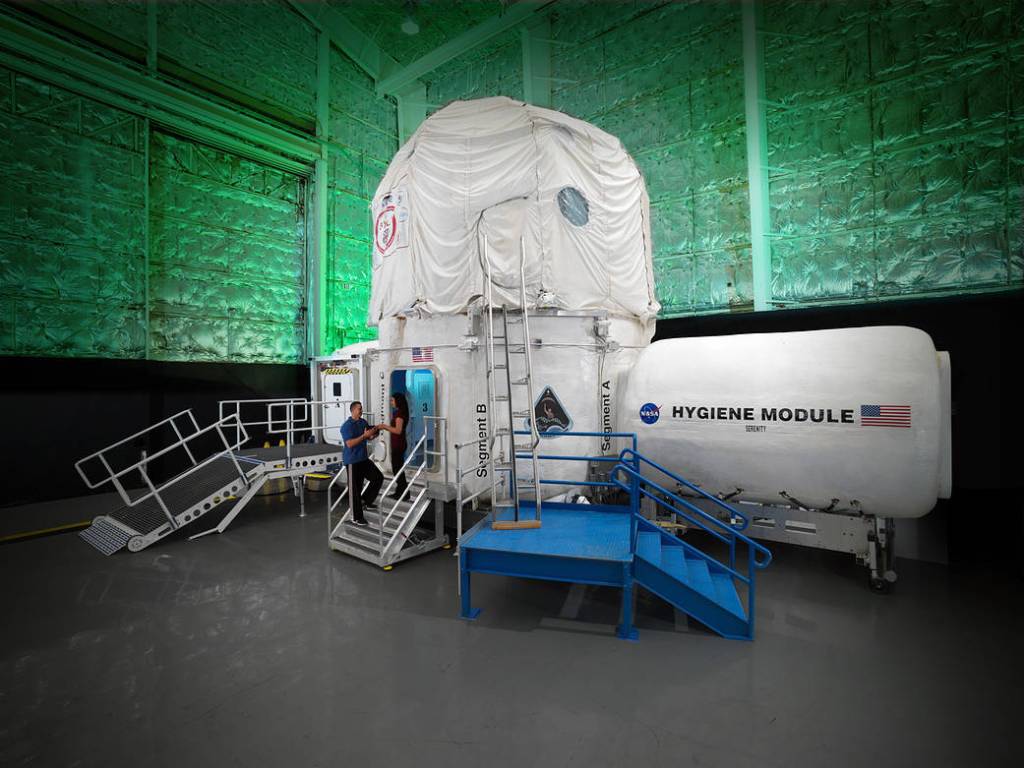
HERA

:envihab
